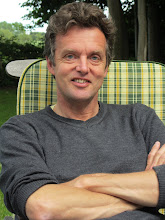THE END OF POWERFUL CLEANING
Most people would agree that a common European market for goods and services is a positive thing. However, sometimes that market is affected by other policies. Those to combat climate change, for instance.
In order to help meet climate goals, the E.U. passed an energy efficiency directive. As part of that, from 1 September it will no longer be possible to purchase or import a vacuum cleaner with a motor using more than 1,600 watts; and from 1 September 2017 that will fall to 900 watts. The directive also requires manufacturers to put an energy efficiency label, from A to G, on the packaging.
Sounds good? The problem, from a consumer's point of view, is that many of the best vacuum cleaners on the market currently use more than 1,600 watts. A recent study by the consumer organisation Which? showed that five of the seven best cleaners had motors higher than the new level. That sounds plausible; more oomph in the motor should lead to a better hoovering up of dust and spiders. Officials and manufacturers say that better technology should lead in time to the same level of cleaning, but with less power. However, consumers are sceptical; the reductions are, after all, quite large.
This little story is a good example of the potential tensions between consumer preferences (high-powered cleaning) and externalised costs (in the form of higher electricity costs, leading to greater CO2 emissions). Expect more such tensions in the coming years.
Walter Blotscher
Thursday, 21 August 2014
Subscribe to:
Post Comments (Atom)

No comments:
Post a Comment